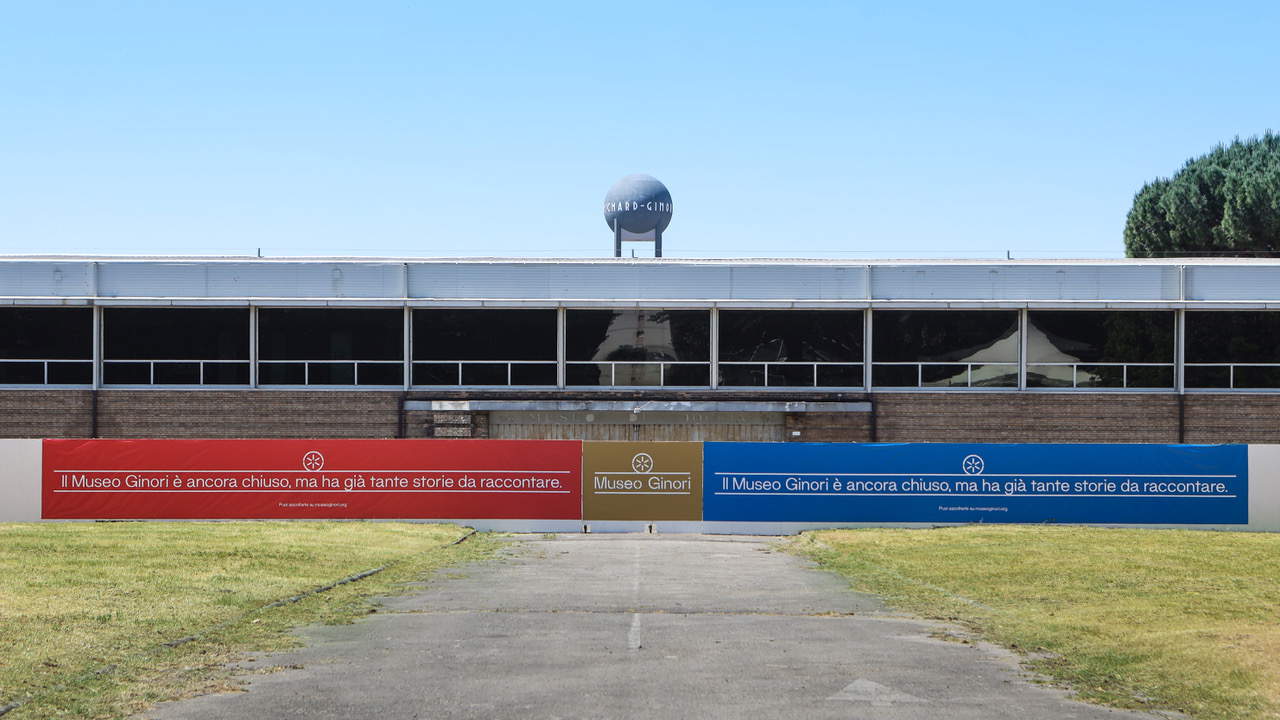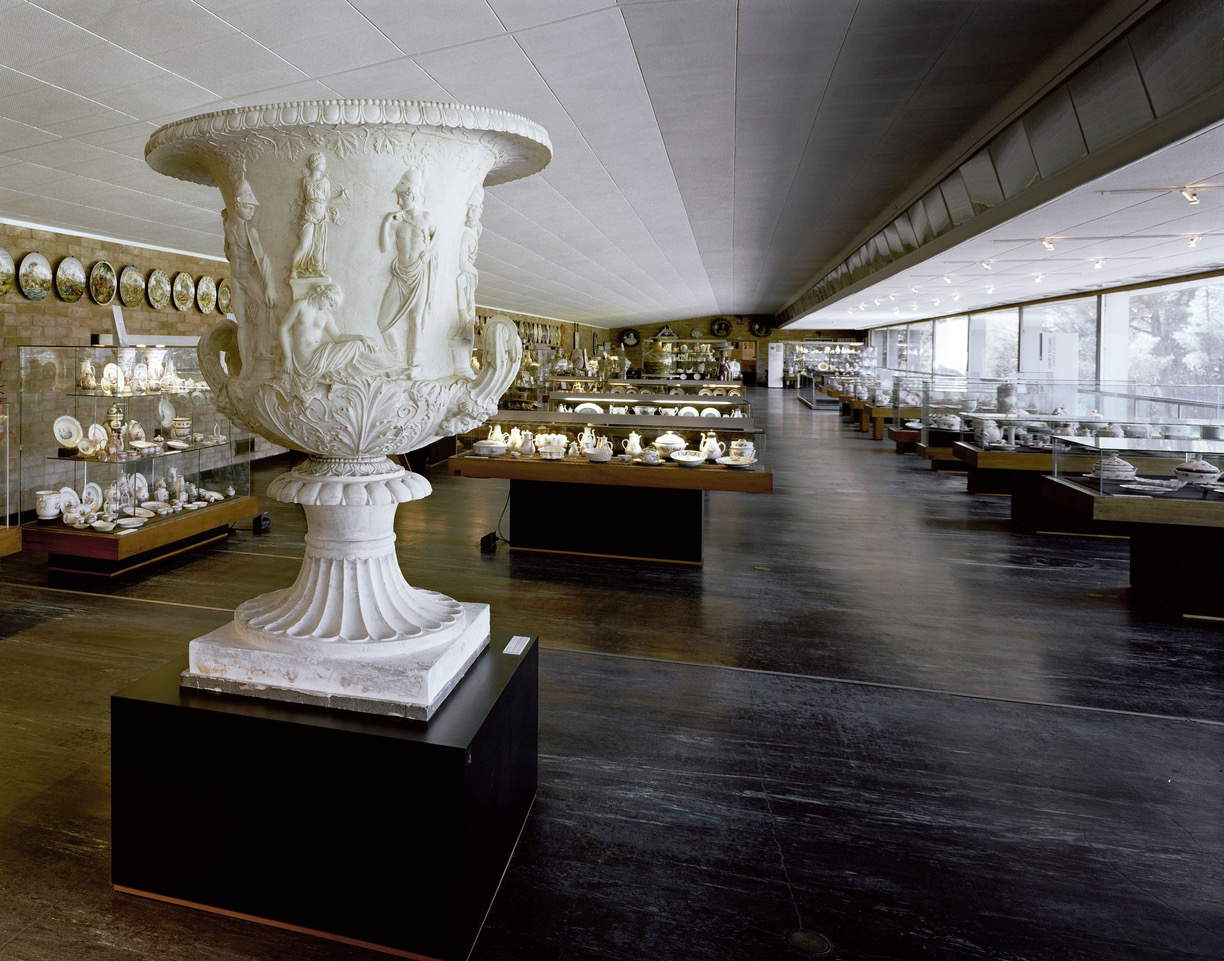Ginori Museum renovation work begins
Renovation work on the Ginori Museum begins in Sesto Fiorentino : As the public and visitors from around the world continue to admire the masterpieces of the former Ginori factory in Doccia, then Richard-Ginori, from the Tuscan museum and displayed in temporary exhibitions in Italy and abroad, with the handover of the building site to thecontractor, the renovation of the building that houses it, closed since May 2014 following the bankruptcy of Richard-Ginori and since 2017 state property, entrusted to the Regional Museums of Tuscany Directorate of the Ministry of Culture until the work is completed, gets underway.
For the first batch of renovations (scheduled to last 462 natural and consecutive days), the CIPE (Interministerial Committee for Economic Planning) has allocated 1.9 million euros from the 2007-2013 Development and Cohesion Fund. Additional funding, supported by the Strategic Plan Major Cultural Projects with 5.5 million euros, will allow for the integral recovery of the building, which was severely damaged in the years of neglect prior to its acquisition by the Italian state, through restoration and conservative rehabilitation, building and plant upgrading (also aimed at complying with safety, fire and seismic adaptation standards) and the redistribution of the interior spaces according to the new functional and museum needs.
This new stage will lead to the entire rearrangement and reopening of the Ginori Museum, whose extraordinary collections include 8,000 porcelain and majolica artifacts dating from 1737 to 1990, a valuable collection of wax, terracotta, plaster, and lead sculptural models from the 18th to the 20th century, engraved metal plates and lithographic stones for printing decorations, an archive of paper documents and drawings (300 of which belong to the Gio Ponti collection), a historical library, a specialized library, and a photo library.
The design of the new museum layout is entrusted to the Fondazione Museo Archivio Richard Ginori della Manifattura di Doccia in agreement with the Ministry of Culture. The Foundation, established since 2019 on the initiative of the Ministry of Culture, the Region of Tuscany and the Municipality of Sesto Fiorentino, currently manages the museum’s collections and archives, conferred for use by the Regional Museums Directorate of Tuscany, and coordinates the museum’s scientific and cultural activities.
Constructed in 1965 to a design by architect Pier Niccolò Berardi, who envisioned it as a perfect casket to store the jewels of the Ginori collection after the closure of the old Manifattura di Doccia headquarters (1957), the building that houses the Ginori Museum is an important example of rationalist architecture, which in its forms and distribution of space is closely reminiscent of Florence’s Santa Maria Novella Station, on whose design Berardi had worked thirty years earlier with master architect Giovanni Michelucci. Today, the interior distribution of the museum respects the original design drawn up by Berardi, with the exception of some changes made during the course of construction and in later years, especially in the ground floor rooms. The renovation work at the architectural, formal and material choice levels will go in continuity with what was envisaged in the original project, without distorting the rationalist language with which the building was conceived.


“Seven years after the State acquired the spaces of the Ginori Museum in Sesto Fiorentino, work is beginning on the renovation of the building that houses it. Since I took office, I have also followed this dossier with great attention and now I greet with satisfaction the opening of the construction site. The allocation I provided in the Strategic Plan Major Cultural Projects is a sign of the government’s renewed attention to this internationally important reality,” says Culture Minister Gennaro Sangiuliano.
“The Ginori Museum,” says Tomaso Montanari, President of the Ginori Foundation, “survived the bankruptcy of Richard-Ginori thanks to an extraordinary grassroots movement that was able to transform its love for this treasure chest of memory into a very effective tool of persuasion that convinced the state to invest in the future of the museum and the territory. The Foundation is happy to finally witness the start of the first construction site and expresses its gratitude to Minister Sangiuliano and the Regional Museums Directorate of Tuscany, which is responsible for coordinating the work. In agreement with the Ministry of Culture, we are working to prepare the layout project in order to reduce as much as possible the time until the opening of the new Ginori Museum.”
“The state’s purchase of the Richard Ginori Company Museum and all of its artistic and archival collections,” says Stefano Casciu, Regional Museums Director of Tuscany, “carried out through an articulate administrative operation in concert between the Polo Museale della Toscana (now Regional Directorate) and the former Soprintendenza ai Monumenti di Firenze, directed by Alessandra Marino, represented the turning point in a long affair aimed at saving from decay and acquiring to the public heritage a museum complex of exceptional cultural, artistic, historical and social interest. The Regional Museums Directorate of Tuscany, assisted by the central offices of the Ministry of Culture, has steadfastly pursued in recent years the various technical and administrative steps necessary to finally reach the start of the renovation work, from which will derive the new museographic arrangement designed together with the Ginori Foundation. I am therefore proud, and grateful to all my collaborators, for the long and difficult path led so far in the direction of the long-awaited reopening of the magnificent Ginori Museum.”
“In the Ginori,” explains Eugenio Giani, President of the Region of Tuscany, “art and work have been intertwined for three centuries, for a history of all-Tuscan excellence that is recognized throughout the world. Doccia artifacts are synonymous with style and beauty, and the beginning of work on the museum that will display these works in their natural home in Sesto Fiorentino is a very important moment for all of Tuscany. The Region is actively committed to the reopening and the full enhancement of this heritage, in the conviction that the Ginori Museum will play the leading role it deserves in Tuscany’s museum offerings, for the benefit of the public from all over the world, but also of the community of the Plain that is the creator of this extraordinary history.”
“Ten years after its closure in May 2014 amid great uncertainty about its future,” comments Lorenzo Falchi, Mayor of Sesto Fiorentino, “the new life of the Ginori Museum, the museum of our entire city and all the people of Sesto Fiorentino, finally really begins. In the following years, thanks to the constant work of all the institutions involved, but above all thanks to the response of Sesto and the people of Sesto who never resigned themselves in front of that closed gate, an important work has been done, with an economic investment by the Ministry and the shared commitment with the City and the Region to give life to the Foundation. The administrative process has been very complex, but, at last, with the start of construction, a new story is really opening.”
 |
| Ginori Museum renovation work begins |
Warning: the translation into English of the original Italian article was created using automatic tools. We undertake to review all articles, but we do not guarantee the total absence of inaccuracies in the translation due to the program. You can find the original by clicking on the ITA button. If you find any mistake,please contact us.





























